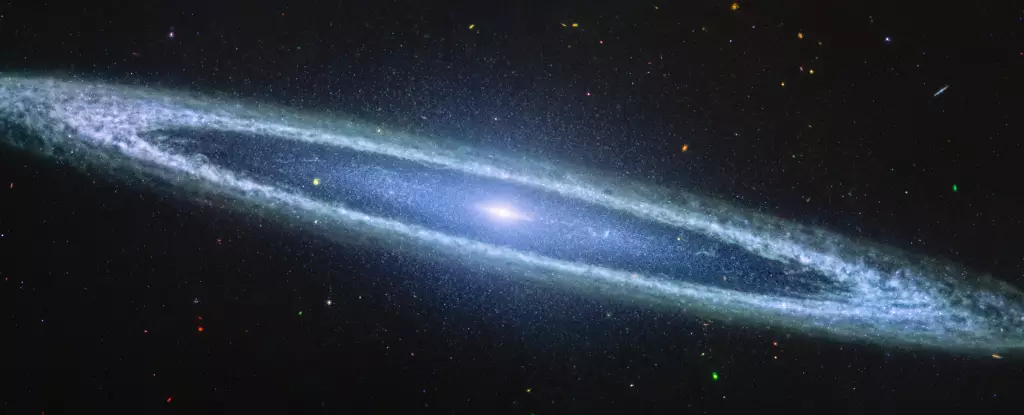Discovered in 1781 by astronomer Pierre Méchain, NGC 4594 has captivated scientists and astronomy enthusiasts alike. Commonly referred to as the Sombrero Galaxy due to its unique appearance, it boasts a striking, symmetrical ring of dust encircling its visible halo. This feature is so distinctive that images taken in 2003 highlight its resemblance to the brim of a large hat. The galaxy’s unusual structure invites questions about its formation and ongoing evolution, providing fertile ground for astronomical investigation.
New Perspectives from Advanced Technology
Recent advances in astronomical technology have granted scientists unprecedented access to the features of the Sombrero Galaxy. The James Webb Space Telescope (JWST) has particularly reshaped our understanding of this galaxy. While the Hubble Space Telescope provided stunning visuals within the visible spectrum, it is limited when it comes to penetrating the thick dust surrounding the galaxy’s core. Consequently, Hubble’s images often obscure potential areas of star formation, leaving researchers with a limited view of what lies hidden within NGC 4594.
In stark contrast, the JWST employs its Mid-Infrared Instrument (MIRI) to navigate through this dust, allowing for deeper insights. The resulting imagery not only unveils the structure and makeup of the central region but also challenges existing beliefs about star formation in the surrounding dust ring. The enhanced detail offers a rare glimpse into the inner workings of one of our cosmic neighbors.
Perhaps the most unexpected discovery revealed by the JWST is the lack of significant star formation in the very dust ring that was once believed to harbor regions of new star births. Instead, warm clumps of molecular gas are detected amidst the dust—an indication that while materials necessary for star formation exist, the actual process may be limited. This revelation counters the long-held assumption that NGC 4594 is a vibrant stellar nursery.
Moreover, the observational data suggests that the central region of the galaxy, rather than being enveloped in a dense halo of stars, is instead characterized by a flat disk structure. This deviation from the typical morphology of galaxies provokes further inquiries into the evolutionary history and dynamic processes at play within the Sombrero Galaxy.
Targeting the heart of the Sombrero Galaxy is its active black hole, a phenomenon that has garnered significant attention. Unlike many galaxies housing luminous central black holes that exhibit bright emissions, the black hole at the center of NGC 4594 displays a low luminosity, making it a distinctive outlier. This modest activity stands in contrast to other active galactic nuclei, which often produce prominent jets of plasma. The JWST’s observations prompt a re-evaluation of what constitutes an “active” black hole and how such classifications impact our understanding of galactic dynamics.
As the JWST continues to collect data on the Sombrero Galaxy, scientists are particularly interested in its many globular clusters—approximately 2,000 in total, a surprisingly high number for a galaxy of its scale. Understanding the properties and formation processes of these clusters may illuminate why NGC 4594 differs so markedly from other galaxies throughout the universe. Aspects such as age, composition, and distribution of these globular clusters could shed light on the galaxy’s unique dynamics and evolution.
The revelations brought forth by the JWST regarding NGC 4594 challenge preconceived notions about galactic structure and the processes of star formation. With each new image, we are reminded of the sophistication of the universe’s architecture and the critical role advanced technology plays in unpacking its complexities. The journey into understanding not only the Sombrero Galaxy but also the broader cosmos is truly just beginning. The upcoming observations promise an exciting future for researchers seeking to deepen their knowledge of galactic phenomena, making the Sombrero Galaxy a focal point in astronomical studies for years to come.


Leave a Reply